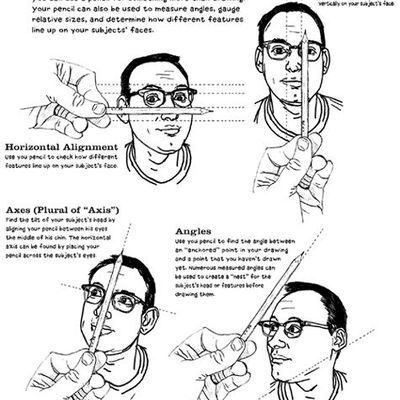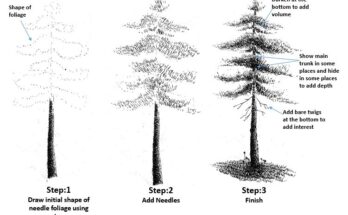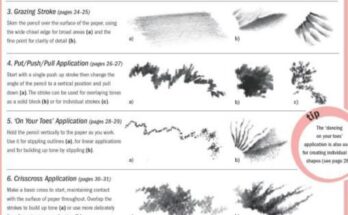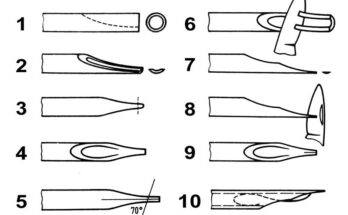Mastering Sighting Techniques for Accurate Drawing: A Step-by-Step Guide
Achieving precision in your drawings begins with understanding the fundamental techniques of sighting, a method used by artists to measure proportions, gauge angles, and align features accurately. Illustrated in this detailed image by Kim Jung Gi, this guide breaks down the process into clear, actionable steps, making it accessible for artists of all levels. Whether you’re sketching a portrait, figure, or still life, mastering sighting techniques will elevate your artwork by ensuring anatomical accuracy and balanced composition.

Step 1: Using a Pencil for More Than Drawing
Start by selecting a pencil, which serves as an essential tool beyond mere sketching. Hold the pencil at arm’s length, extending it toward your subject with your arm fully extended and locked at the elbow. This stabilizes your hand and provides a consistent reference point. Use your thumb to mark a specific length along the pencil, aligning it with a key feature of your subject—such as the height of the head or the width of the shoulders. This marked length becomes your unit of measurement, allowing you to compare and scale other parts of the subject relative to this initial reference. This technique helps establish a proportional foundation, ensuring your drawing reflects the subject’s true dimensions.
Step 2: Horizontal Alignment Features in Your Subject’s Face
Next, focus on aligning the facial features horizontally to maintain symmetry and proportion. Hold the pencil vertically or horizontally at arm’s length, aligning it with a central feature, such as the nose or eyes. Close one eye to avoid parallax errors, and use the pencil’s edge to check the alignment of features across the face. For example, position the pencil to match the height of the eyes, then slide your thumb or finger along the pencil to note the position of the mouth or chin relative to that baseline. This step ensures that features are evenly spaced and correctly positioned, preventing common errors like misaligned eyes or an off-center nose.
Step 3: Axes (Plural of “Axis”) – Finding the Angle Between Features
Angles are critical for capturing the unique tilt or turn of a subject’s head or body. To measure angles, hold the pencil at arm’s length and align it with a straight edge, such as the line between the eyes or the tilt of the shoulders. Rotate the pencil to match the angle you observe, then use your thumb to hold that position. Bring the pencil back to your drawing surface and replicate the angle, transferring it onto your paper. This technique is particularly useful for dynamic poses or profiles, where the relationship between features—like the angle between the forehead and nose—defines the subject’s character. Repeat this process for multiple angles to build a network of accurate relationships across the drawing.
Step 4: Plum Line – See How Different Features Line Up
The plumb line technique helps verify vertical alignment and overall balance. Hold the pencil vertically at arm’s length, letting it hang naturally or aligning it with a central axis, such as the spine or the center of the face. Observe how features line up along this imaginary vertical line—does the nose align with the chin, or does the ear fall off-center? Use this method to check the subject’s posture or the symmetry of the face, adjusting your sketch as needed. This step is especially effective for full-figure drawings, ensuring the body’s weight distribution and stance are correctly represented.
By practicing these sighting techniques, as illustrated in the accompanying image, you’ll develop a keen eye for proportion and perspective. Kim Jung Gi’s detailed visuals demonstrate each step, from measuring with a pencil to aligning features and measuring angles, providing a roadmap to precision in your artwork. Incorporate these methods into your routine to enhance your observational skills and produce drawings that capture the essence of your subject with remarkable accuracy. Whether you’re a beginner or a seasoned artist, this guide is an invaluable tool for refining your craft!



